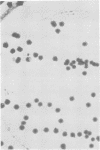Abstract
The pathogenicity of Vibrio cholerae strains "cured" of "Kappa-type" phage was not significantly altered relative to that of their "Kappa" lysogenic parental strains. Unlike Corynebacterium diphtheriae, the capacity of V. cholerae to produce exotoxin was not stimulated as a consequence of active phage multiplication. Toxin production in cultures in which Kappa-type phage multiplication was initiated either by inducing Kappa lysogens or by infecting naturally occurring or "cured" Kappa-sensitive strains was greatly reduced compared to normally growing control cultures. Kappa-sensitive El Tor strain Mak 757 and a Kappa lysogen derived from it did not differ in their capacity to colonize ligated rabbit ileal loops nor in their sensitivites to ultraviolet radiation, acidic pH, or osmotic shock. We conclude that Kappa-type phages do not directly affect the pathogenicity of these V. cholerae strains.
Full text
PDF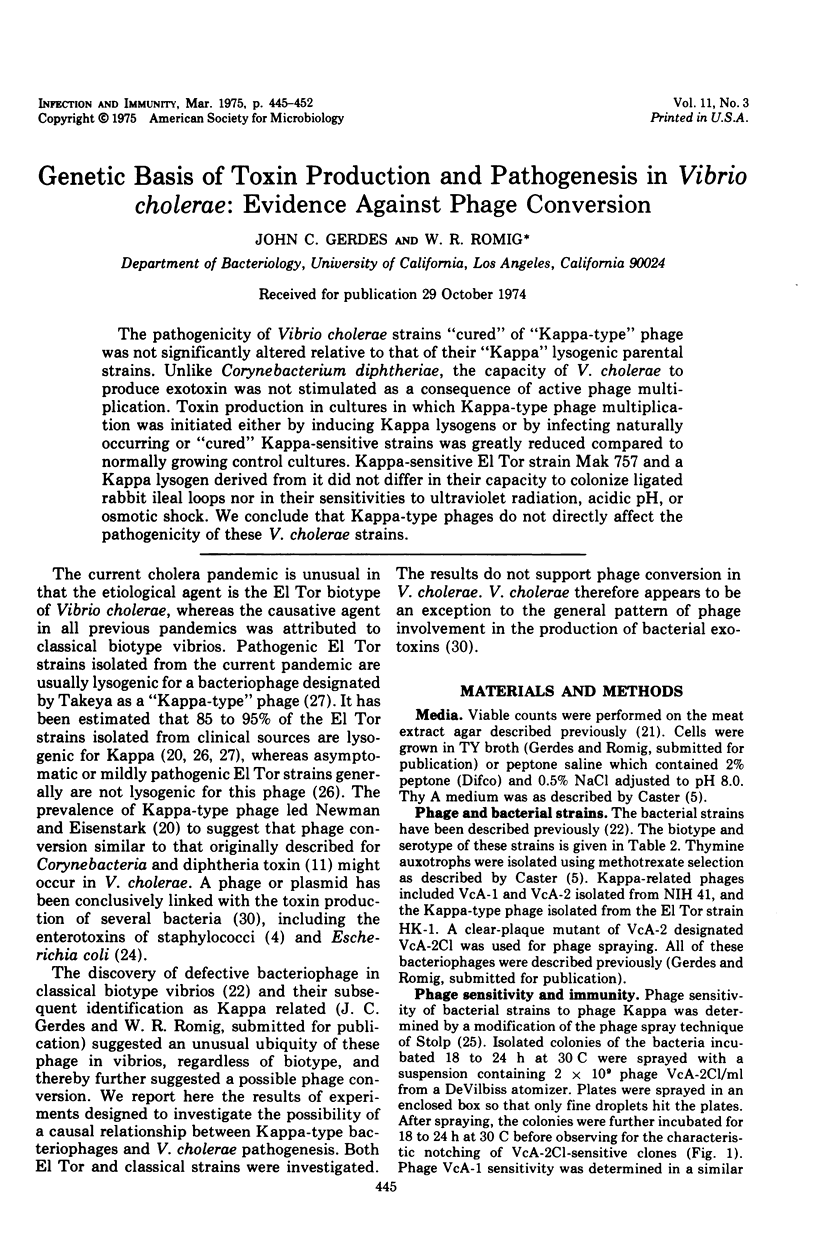
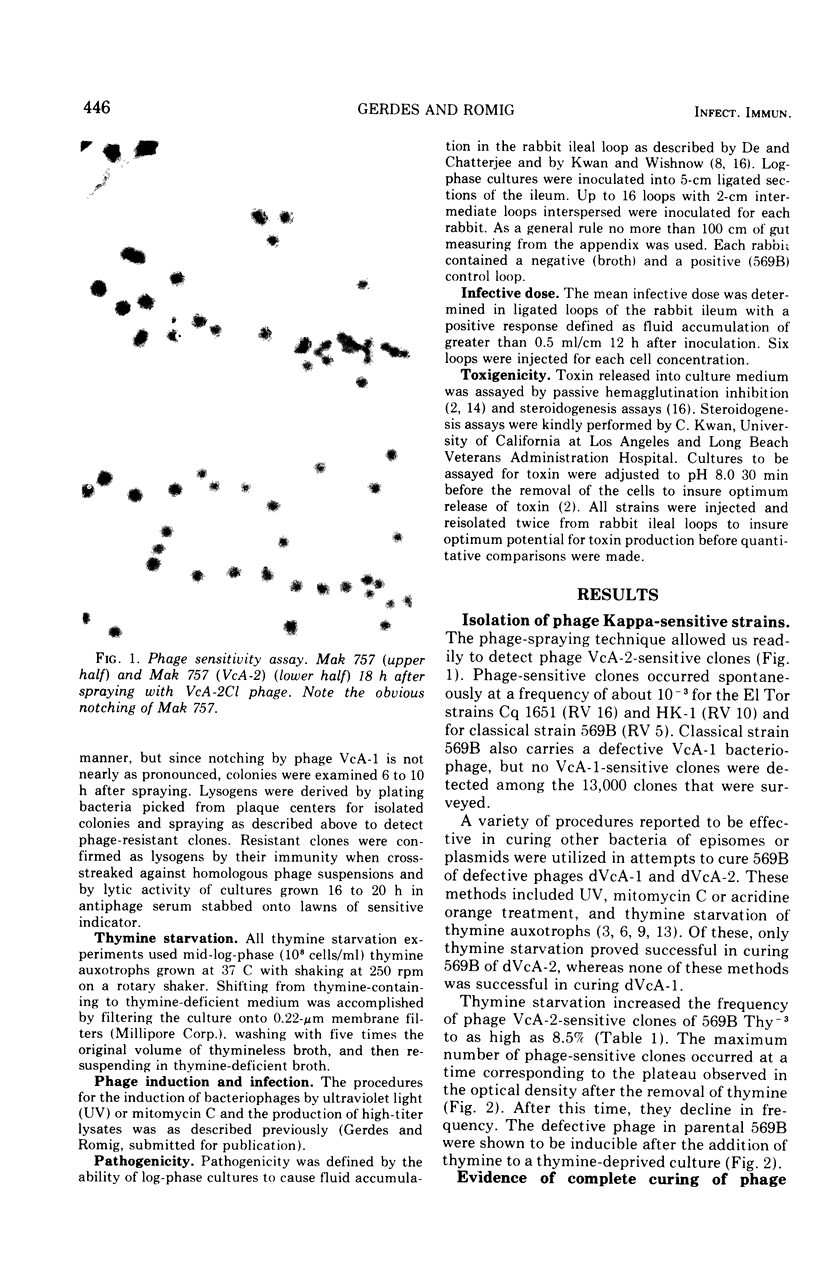
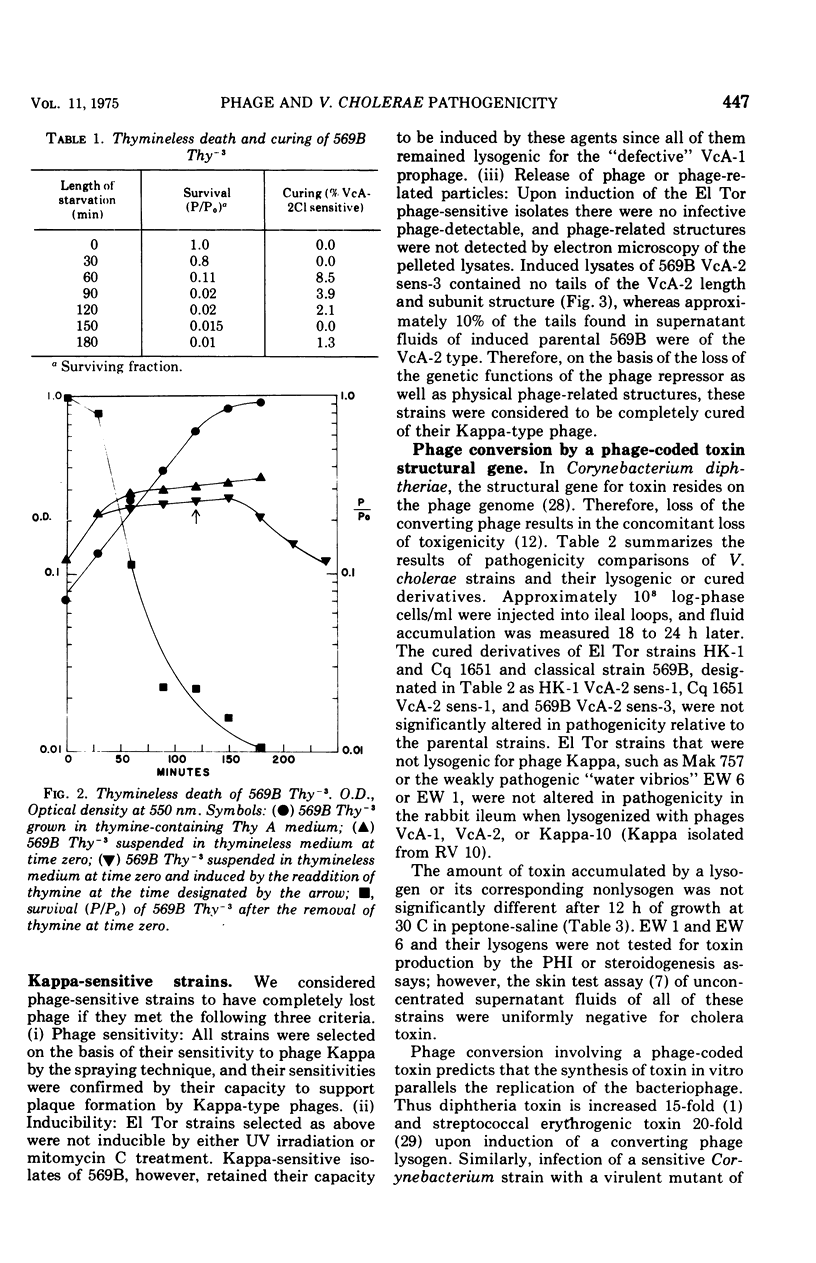
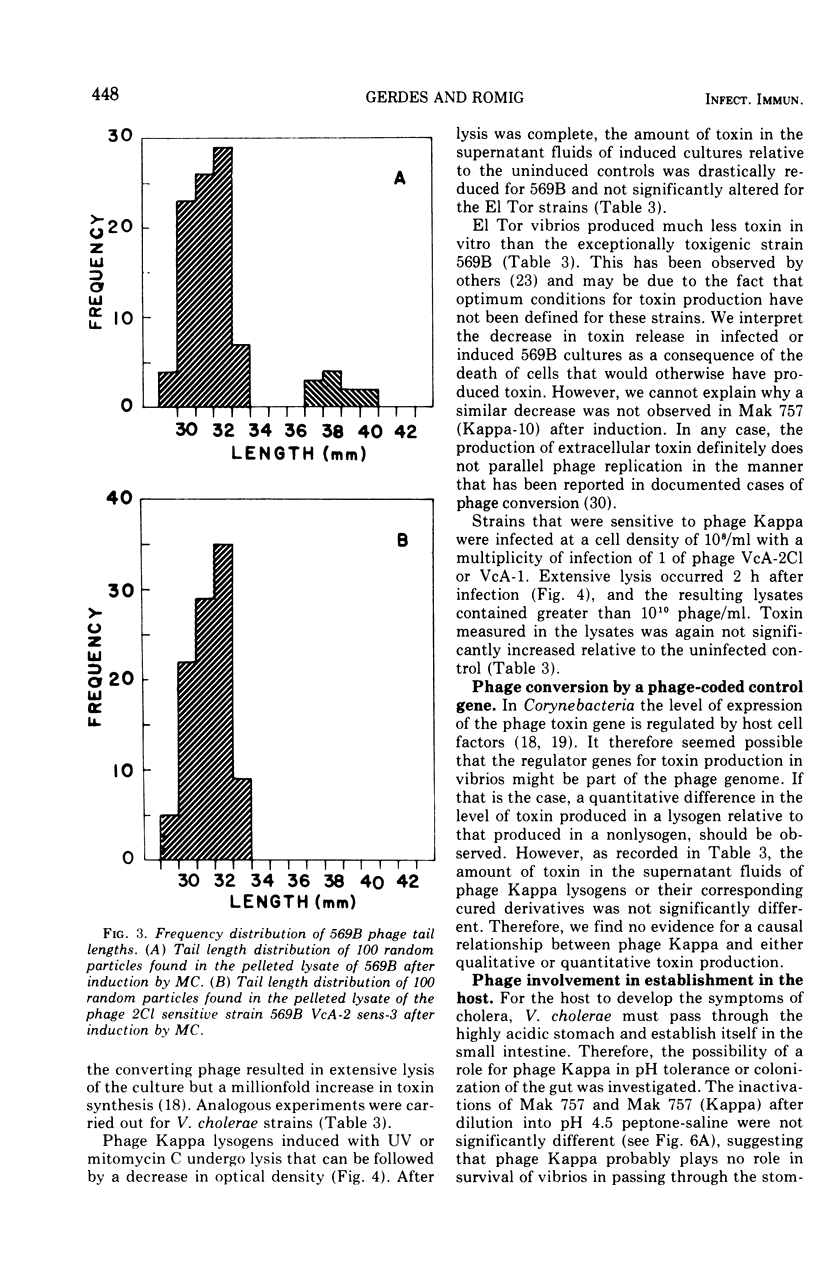
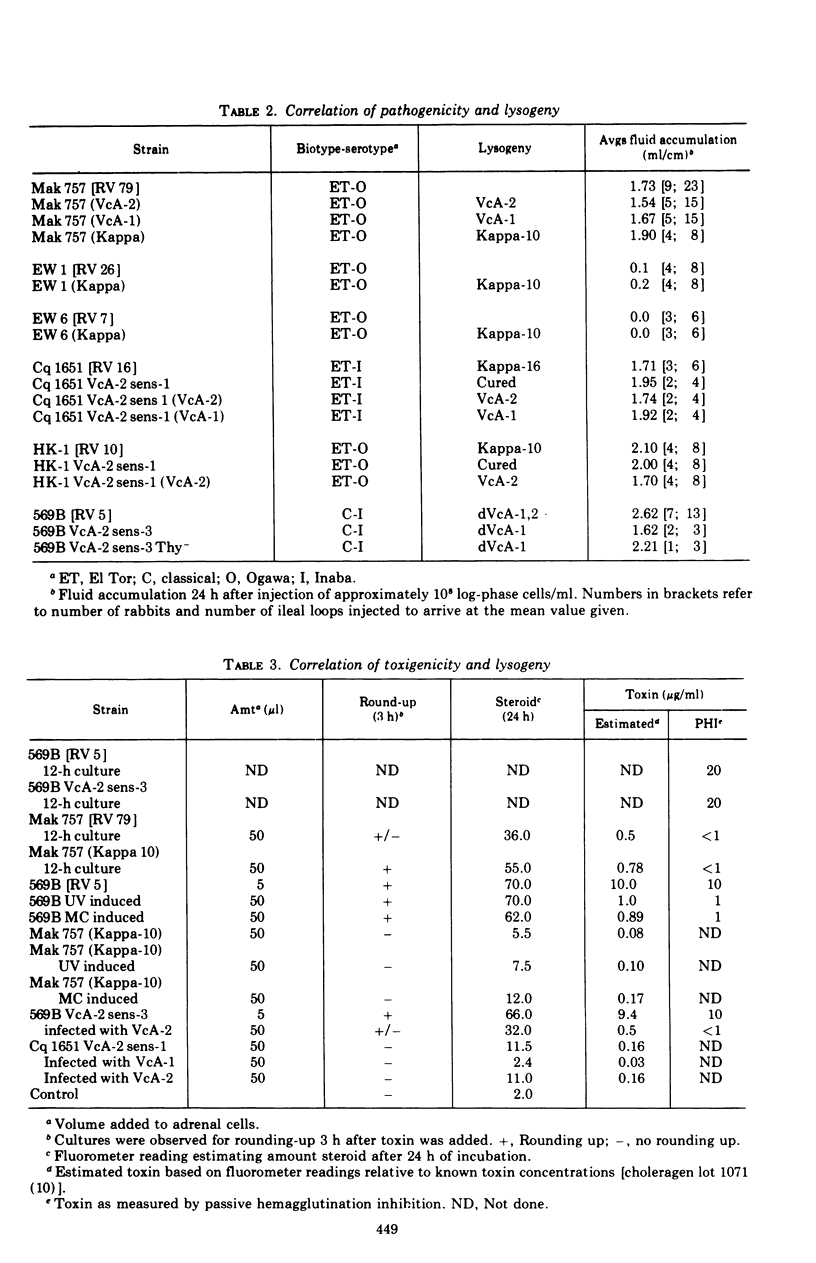
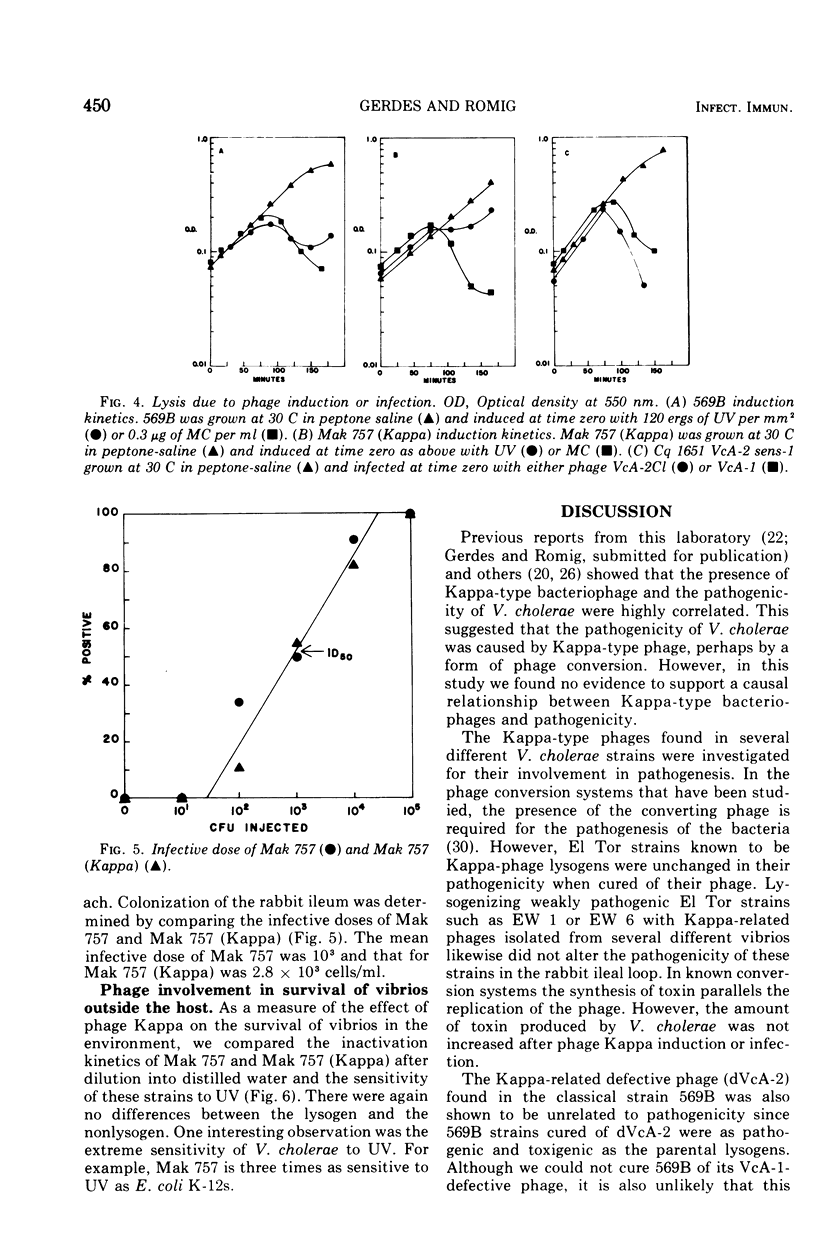
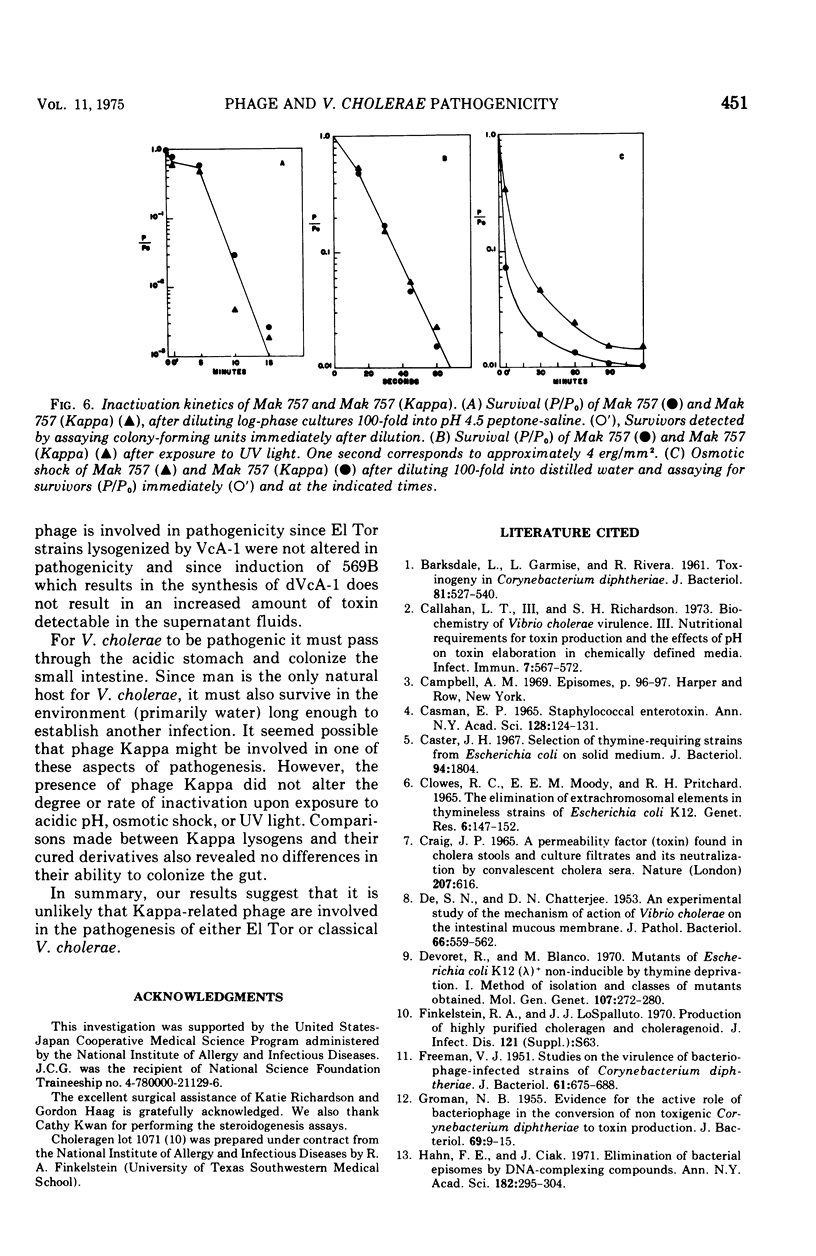
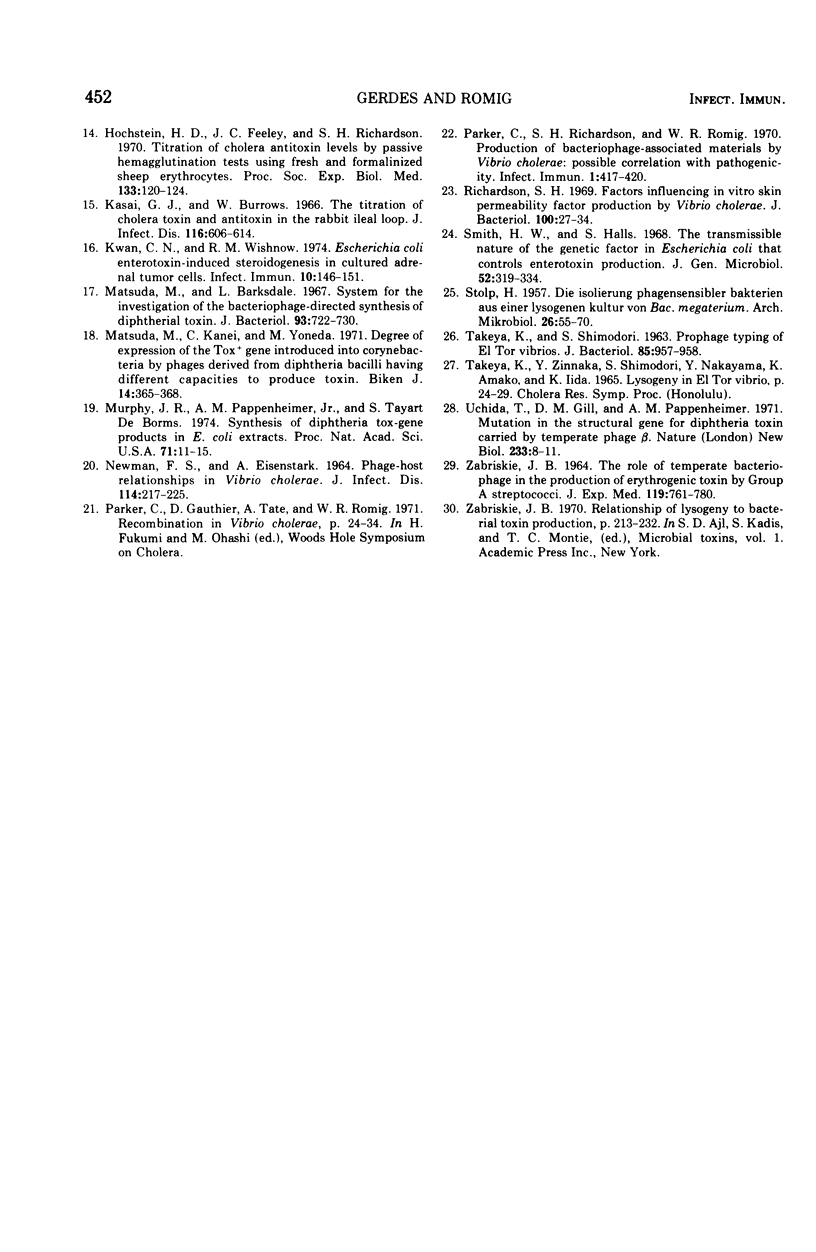
Images in this article
Selected References
These references are in PubMed. This may not be the complete list of references from this article.
- BARKSDALE L., GARMISE L., RIVERA R. Toxinogeny in Corynebacterium diphtheriae. J Bacteriol. 1961 Apr;81:527–540. doi: 10.1128/jb.81.4.527-540.1961. [DOI] [PMC free article] [PubMed] [Google Scholar]
- CLWES R. C., MOODY E. E., PRITCHARD R. H. THE ELIMINATION OF EXTRACHROMOSOMAL ELEMENTS IN THYMINELESS STRAINS OF ESCHERICHIA COLI K12. Genet Res. 1965 Feb;6:147–152. doi: 10.1017/s0016672300004018. [DOI] [PubMed] [Google Scholar]
- Callahan L. T., 3rd, Richardson S. H. Biochemistry of Vibrio cholerae virulence. 3. Nutritional requirements for toxin production and the effects of pH on toxin elaboration in chemically defined media. Infect Immun. 1973 Apr;7(4):567–572. doi: 10.1128/iai.7.4.567-572.1973. [DOI] [PMC free article] [PubMed] [Google Scholar]
- Casman E. P. Staphylococcal enterotoxin. Ann N Y Acad Sci. 1965 Jul 23;128(1):124–131. doi: 10.1111/j.1749-6632.1965.tb11634.x. [DOI] [PubMed] [Google Scholar]
- Caster J. H. Selection of thymine-requiring strains from Escherichia coli on solid medium. J Bacteriol. 1967 Nov;94(5):1804–1804. doi: 10.1128/jb.94.5.1804-.1967. [DOI] [PMC free article] [PubMed] [Google Scholar]
- Craig J. P. A permeability factor (toxin) found in cholera stools and culture filtrates and its neutralization by convalescent cholera sera. Nature. 1965 Aug 7;207(997):614–616. doi: 10.1038/207614a0. [DOI] [PubMed] [Google Scholar]
- DE S. N., CHATTERJE D. N. An experimental study of the mechanism of action of Vibriod cholerae on the intestinal mucous membrane. J Pathol Bacteriol. 1953 Oct;66(2):559–562. doi: 10.1002/path.1700660228. [DOI] [PubMed] [Google Scholar]
- FREEMAN V. J. Studies on the virulence of bacteriophage-infected strains of Corynebacterium diphtheriae. J Bacteriol. 1951 Jun;61(6):675–688. doi: 10.1128/jb.61.6.675-688.1951. [DOI] [PMC free article] [PubMed] [Google Scholar]
- GROMAN N. B. Evidence for the active role of bacteriophage in the conversion of nontoxigenic Corynebacterium diphtheriae to toxin production. J Bacteriol. 1955 Jan;69(1):9–15. doi: 10.1128/jb.69.1.9-15.1955. [DOI] [PMC free article] [PubMed] [Google Scholar]
- Hahn F. E., Ciak J. The problems of drug-resistant pathogenic bacteria. Elimination of bacterial episomes by DNA-complexing compounds. Ann N Y Acad Sci. 1971 Jun 11;182:295–304. doi: 10.1111/j.1749-6632.1971.tb30665.x. [DOI] [PubMed] [Google Scholar]
- Hochstein H. D., Feeley J. C., Richardson S. H. Titration of cholera antitoxin levels by passive hemagglutination tests using fresh and formalinized sheep erythrocytes. Proc Soc Exp Biol Med. 1970 Jan;133(1):120–124. doi: 10.3181/00379727-133-34421. [DOI] [PubMed] [Google Scholar]
- Kasai G. J., Burrows W. The titration of cholera toxin and antitoxin in the rabbit ileal loop. J Infect Dis. 1966 Dec;116(5):606–614. doi: 10.1093/infdis/116.5.606. [DOI] [PubMed] [Google Scholar]
- Kwan C. N., Wishnow R. M. Escherichia coli enterotoxin-induced steroidogenesis in cultured adrenal tumor cells. Infect Immun. 1974 Jul;10(1):146–151. doi: 10.1128/iai.10.1.146-151.1974. [DOI] [PMC free article] [PubMed] [Google Scholar]
- Matsuda M., Barksdale L. System for the investigation of the bacteriophage-directed synthesis of diphtherial toxin. J Bacteriol. 1967 Feb;93(2):722–730. doi: 10.1128/jb.93.2.722-730.1967. [DOI] [PMC free article] [PubMed] [Google Scholar]
- Matsuda M., Kanei C., Yoneda M. Degree of expression of the tox + gene introduced into corynebacteria by phages derived from diphtheria bacilli having different capacities to produce toxin. Biken J. 1971 Sep;14(3):365–368. [PubMed] [Google Scholar]
- Murphy J. R., Pappenheimer A. M., Jr, de Borms S. T. Synthesis of diphtheria tox-gene products in Escherichia coli extracts. Proc Natl Acad Sci U S A. 1974 Jan;71(1):11–15. doi: 10.1073/pnas.71.1.11. [DOI] [PMC free article] [PubMed] [Google Scholar]
- NEWMAN F. S., EISENSTARK A. PHAGE-HOST RELATIONSHIPS IN VIBRIO CHOLERAE. J Infect Dis. 1964 Jun;114:217–225. doi: 10.1093/infdis/114.3.217. [DOI] [PubMed] [Google Scholar]
- Parker C., Richardson S. H., Romig W. R. Production of Bacteriophage-Associated Materials by Vibrio cholerae: Possible Correlation with Pathogenicity. Infect Immun. 1970 Apr;1(4):417–420. doi: 10.1128/iai.1.4.417-420.1970. [DOI] [PMC free article] [PubMed] [Google Scholar]
- Richardson S. H. Factors influencing in vitro skin permeability factor production by Vibrio cholerae. J Bacteriol. 1969 Oct;100(1):27–34. doi: 10.1128/jb.100.1.27-34.1969. [DOI] [PMC free article] [PubMed] [Google Scholar]
- STOLP H. Die Isolierung phagensensibler Bakterien aus einer lysogenen Kultur von Bac. Megaterium. Arch Mikrobiol. 1957;26(1):55–70. [PubMed] [Google Scholar]
- TAKEYA K., SHIMODORI S. "PROPHAGE-TYPING" OF EL TOR VIBRIOS. J Bacteriol. 1963 Apr;85:957–958. doi: 10.1128/jb.85.4.957-958.1963. [DOI] [PMC free article] [PubMed] [Google Scholar]
- Uchida T., Gill D. M., Pappenheimer A. M., Jr Mutation in the structural gene for diphtheria toxin carried by temperate phage . Nat New Biol. 1971 Sep 1;233(35):8–11. doi: 10.1038/newbio233008a0. [DOI] [PubMed] [Google Scholar]
- ZABRISKIE J. B. THE ROLE OF TEMPERATE BACTERIOPHAGE IN THE PRODUCTION OF ERYTHROGENIC TOXIN BY GROUP A STREPTOCOCCI. J Exp Med. 1964 May 1;119:761–780. doi: 10.1084/jem.119.5.761. [DOI] [PMC free article] [PubMed] [Google Scholar]



